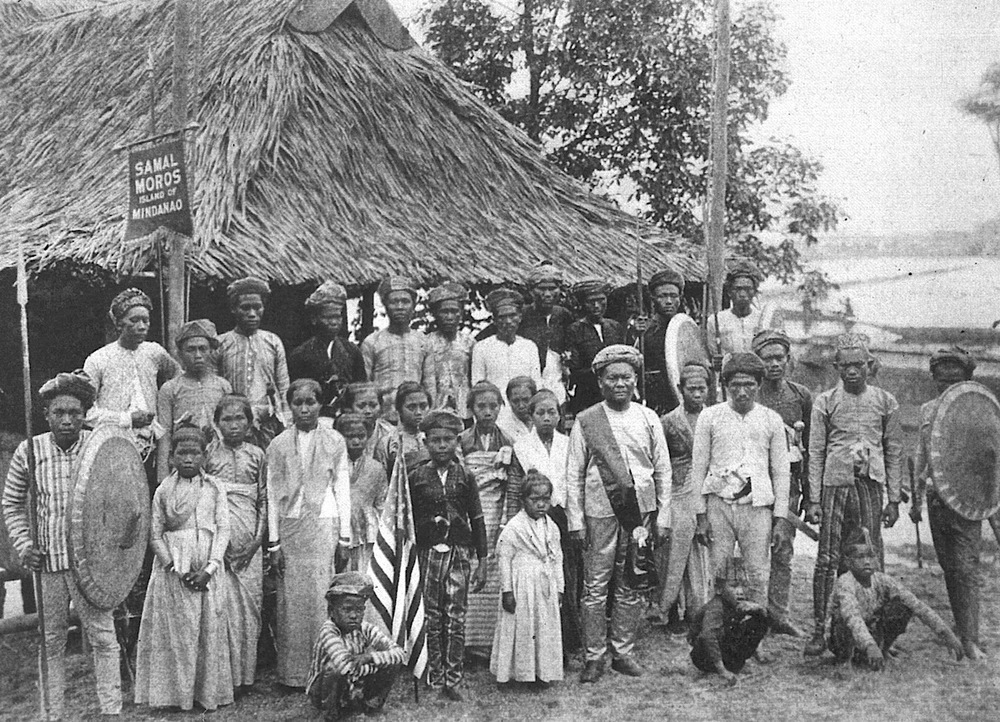
It was a grandiose idea for those days, but William Howard Taft, governor-general of the Philippines and future president of the United States wanted a novel way to introduce the far-flung, new colony to his fellow Americans.
It was a novel idea indeed. A Philippine Exposition with more than 130 buildings was built on 47 acres of fairground. There were reproductions of ancient structures like the Manila Cathedral and the Ayuntamiento, the seat of Spanish colonial power. More than 70,000 exhibits from the finest ethnographic, church, provincial, and private art collections all over the islands were crated and shipped all the way to Missouri.
Entire villages were built to replicate those of the Visayans, Bagobos, Samals, “Moros” (as they were called then), Igorots, Tingguianes, Negritos, and 30 other tribes. These villages were “stocked” with over a thousand tribal men, women, and children as living exhibits.
The logistics must have been mindboggling, but the Philippine Exposition at the 1904 St. Louis World’s Fair was a stunning visual extravaganza. It also popularized distorted images of the Philippines and its people.
The U.S. Congress appropriated $1.5 million—a hefty sum in those days—for the Philippines’ participation in the commemoration of the centennial of the Louisiana Purchase. More than 20 countries were represented. Each American state built a pavilion, but the Philippine allotment was the largest of all, with its own lake that was linked to the exposition grounds by three bridges.
On the lake were various native boats—vintas, praos, bancas, cascos, and assorted fishing vessels.
A huge parade ground-encampment housed the 700 Philippine Scouts, Constabulary soldiers, and military band members that marched each day carrying the stars and stripes to the delight of fairgoers. The Exposition had three restaurants, its own power plant, and a hospital.
A Forestry Building, Mining Building, Agricultural Building, and Commerce Building showed off the natural resources of the new colony and all its commercial possibilities. The Forestry Building, a large wooden structure with nipa sides and roof, used 100 different kinds of wood indigenous to the islands. The Forestry Building’s brochure boasted 50,000,000 acres of virgin timberland ready for the cutting.
The Fisheries Building displayed the largest collection of seashells in the world and a thousand mounted specimens of the different fishes of the islands. The Ethnological Museum housed the most extensive exhibit of crafts, clothing, pottery, and implements of the various tribes. Nothing was spared in showing off America’s newest possession.
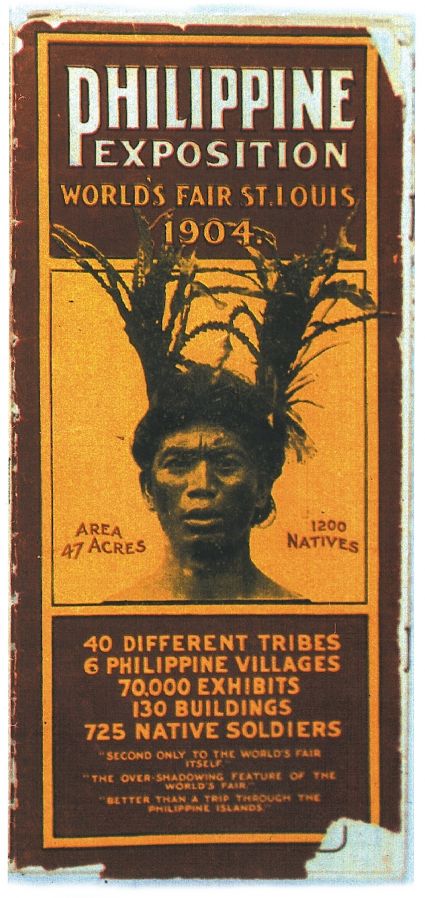
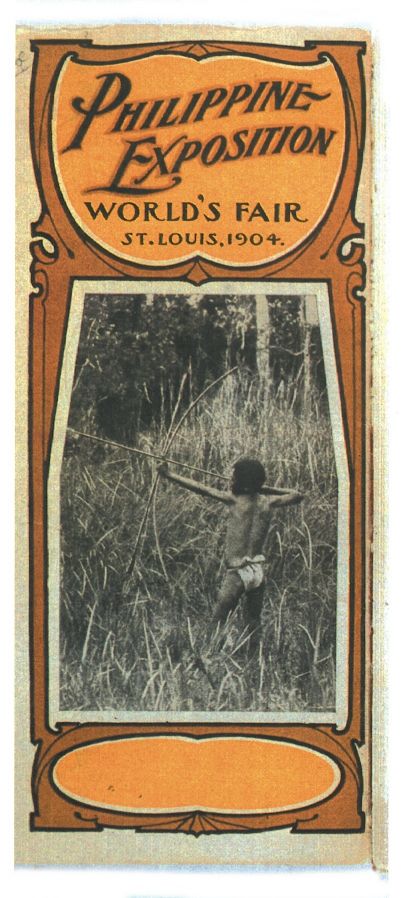
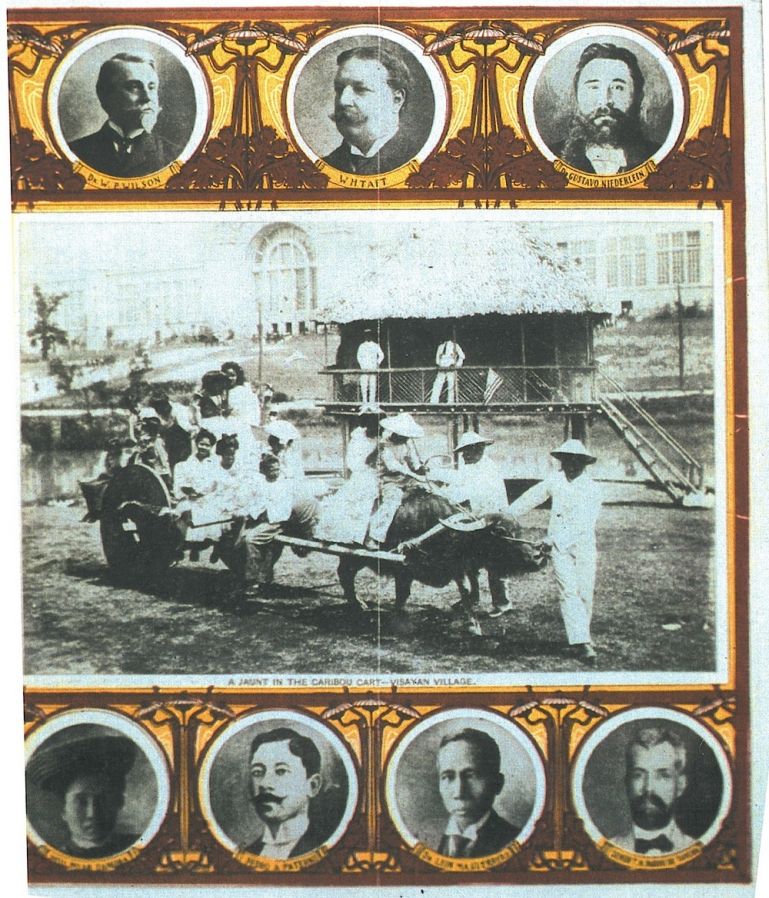
The exhibition of tribal groups brings to mind the mechanical Indian village that can be seen from a paddle wheeler in Disneyland’s Frontierland. But in this case, the “Indians” were real, brought over from the remotest of villages 12,000 miles away.
In the Negrito Village, half-naked Negrito men and boys displayed their bow and arrow skills to curious fair-haired men and boys in suits and bowler hats.
The Igorot Village, spread over six acres with 100 natives, was a World’s Fair hit. Every day, throngs of curious Americans flocked to the village to witness the G-stringed tribe boil a dog for dinner.
Dancers in the “Moro” Village performed to the accompaniment of gongs and brass instruments, and visitors could look into the thatched homes of several datus and their retinues of wives in colorfully patterned malongs. The Lanao “Moros” was even more fascinating since they live in tree houses. The Moslems considered it against their religion to be photographed so a sign was posted at the entrance to their village reading, “PERSONS PHOTOGRAPHING THE MOROS DO SO AT THEIR OWN RISK.”
Fairgoers considered the Bagobo Village as the most picturesque. The tall, androgynously handsome Bagobo men with waist-long hair wore elaborately beaded tight-fitting clothes in geometric patterns and were a sensual sight to behold for the straight-laced viewers.
The Visayan Village with 130 natives had woodcarvers, jusi and piña textile weavers, embroiderers, and hat makers— all of them at work outside their nipa huts. There were theatrical performances and strolling minstrels. Beautiful Christianized ladies in lavish ternos entertained the visitors, convincing them that not all native women were of the “La Belle Sauvage” variety. One visitor's brochure said of the artistic Visayans:
“In a classroom, relieved visitors saw the students learning their ABCs and not Headhunting 101.”
“It is no uncommon sight to see a gay young cavalier surrounded by a coterie of pretty girls, picturesquely costumed, thumping away on his guitar and singing some romantic ballad, while the crowd joins in the lusty chorus. On the stage of the little theater, the group of actors gives evidence of decided histrionic caliber.”
Another crowd-getter was the brother-and-sister team of Juan and Martina de la Cruz, midgets who were born in Iloilo. Juan, 29 years old, was 29 inches high and Martina, two years older, was 27 inches high. They were billed as the “smallest fully developed people in the civilized world.”
Back in the Philippines, quite a few Filipinos and even some Americans were not pleased by the decision to send non-Christian natives to the Fair to be gawked at, fearing it would only bolster the impression that all Filipinos were dog eaters, wore only G-strings, and lived in tree houses. But the colonial government’s secretary of the interior, Dean Worcester, a former zoologist who lived with and studied many of the non-Christian tribes, vigorously defended the decision. He reasoned that Christian Filipinos had little regard for the tribes and were embarrassed by their existence. Worcester had pointed out that one-eighth of the total Philippine population was composed of non-Christian tribes and that the “Moros” were “as real as the Tagalogs.”
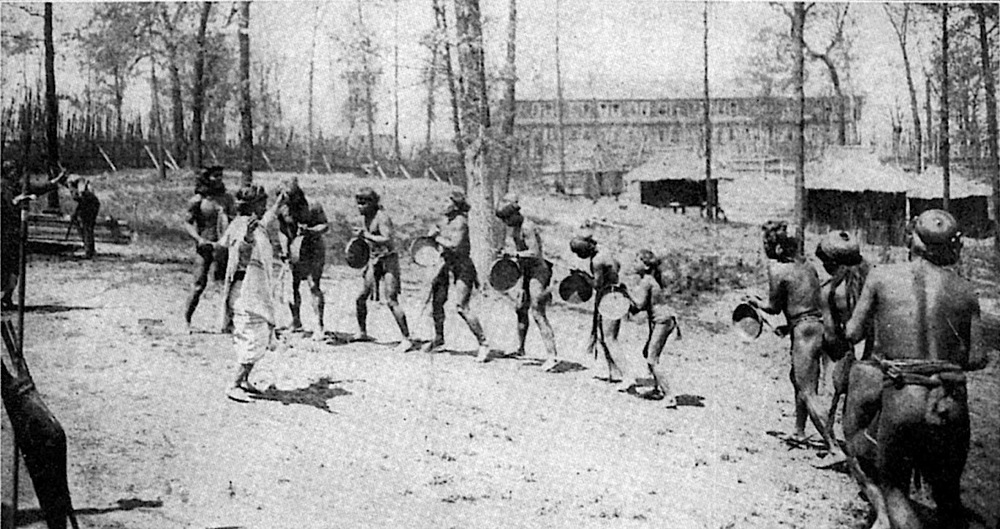
Worcester’s rejoinder hit a vulnerable spot. His critics, however, had valid grounds for concern. “Scientific” racial theories “proving” the natural inferiority of non-whites were current in the United States at the turn of the century, and popular leaders like Theodore Roosevelt openly subscribed to a racially hierarchical view of the world, with Anglo-Saxons at the very top.
To counterbalance the more exotic sights at the Philippine Exposition, 50 “little savages” (a quote from a souvenir brochure) and a Filipina teacher, in a classroom in a nipa and bamboo cottage, went through a regular class day. Relieved visitors saw the students learning their ABCs and not Headhunting 101.
The Philippine Scouts and the Constabulary were a sight to behold as they marched. Formations of strapping young men in starched khaki uniforms executed precise close-order drills. They were, however, a sorry lot from the Filipino nationalist point of view. These men were like the British Gurkhas. They earned their colors during the Philippine-American War fighting for the United States. One company was composed of Macabebe men, infamous for having helped in the capture of Philippine President Emilio Aguinaldo. Another was a company of Iloilo men, who fought side by side with the Americans in wresting their hometown from the revolucionarios. Many of these men still carried scars and wounds from the war that ended just a few years back. The Constabulary Band of 80 musicians may have regaled Fair visitors with their skillful playing, but they were playing Sousa and American martial airs that once inspired the imperial army to crush Filipino Independistas.
What happened to our early Filipino travelers when the Fair closed?
Some tribespeople, unaccustomed to winter, caught pneumonia and died. Not all of the tribal groups returned to the Philippines immediately. A large number of the Igorots ended up in Chicago, working again as live exhibits in another authentic village setting. A nefarious character named R. Schneiderwind made money exhibiting the Igorots, causing a ruckus back in the Philippines and forcing Dean Worcester to put a stop to the export of tribal groups for exhibition purposes. When the Igorots returned, five years later, Schneider-wind owed them 2,000 pesos. They were never paid.
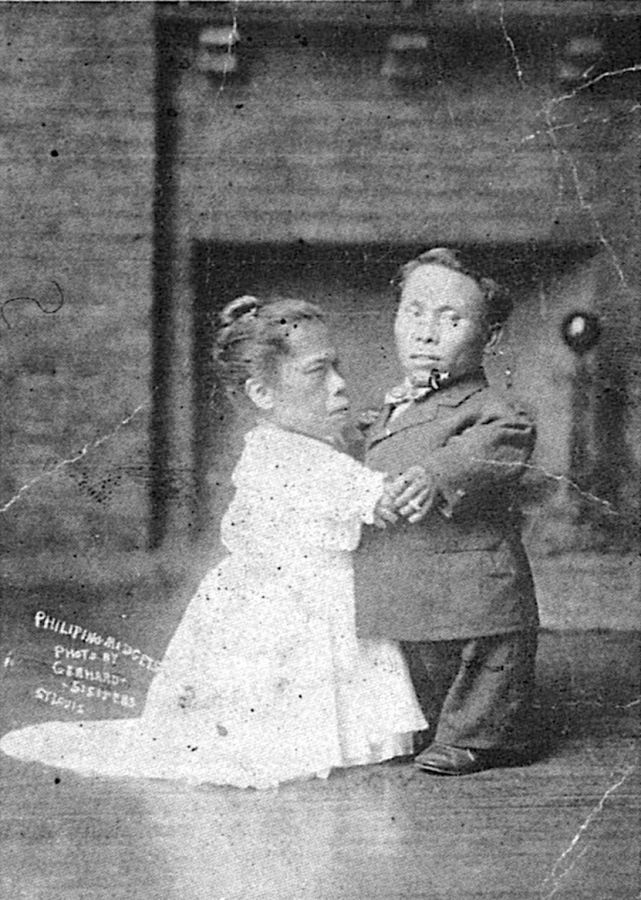
And what of the midgets Juan and Martina? There were reports that Barnum and Bailey signed them up for the circus, but nothing was heard of them again.
As for the 70,000 pieces of exhibits, many are in storage at the Smithsonian in Washington, D.C. During the Marcos years, there were attempts to bring them back to the Philippines, but no funds were forthcoming from the Philippine side. The pieces can no longer stay at the Smithsonian because of space limitations and are scheduled to be transferred to a government storage house in Maryland.
As for the millions of acres of trees in the Philippines that were just waiting to be felled by intrepid investors, less than 15 percent remain upright today. By the year 2004, a hundred years after the 1904 World’s Fair, the Philippines may have less virgin forest than the 47 acres on which the Philippine Exposition stood in St. Louis.
Reprinted from Filipinas Magazine, October 1994.
